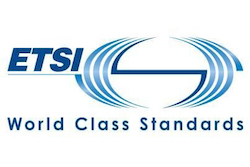Standards agency ETSI has published 11 specifications relating to network functions virtualisation, comprising the likes of architectural frameworks, and descriptions of the compute, hypervisor and network domains within the infrastructure.
The publication marks the end of Phase One of the association’s NFV Industry Specification Group, which has worked for the past two years on defining the concept. More than 240 organisations were involved in the project.
Steven Wright, Chair of ETSI NFV ISG, said: “I’d like to thank all of the NFV ISG participants for their tremendous dedication through our numerous face-to-face meetings and conference calls to evolve the NFV vision from the original operator whitepaper and bring these documents to publication.”
The new documents follow the first set of papers issued in October 2013. ETSI said this new publication provides a foundation for future NFV deployments. It said the paper’s “common and agreed” definitions of the technology will stimulate collaboration among operators and vendors.
According to ETSI, there are more than 30 NFV demonstrations taking place. These have involved the likes of Telekom Austria, Telefónica and Orange, with practically every European tier one operator exploring the technology.
The association is planning to publish a further 28 documents as part of Phase Two of the project. It will focus on interoperability and will involve work with other standards bodies to avoid duplication.
Don Clarke, Chair of NFV ISG network operators council, commented: “Phase One exceeded our expectations in fostering an open NFV ecosystem and influencing standards development organizations, open source communities and vendor roadmaps; achieving and validating interoperability at critical reference points is the key focus for Phase Two.”
Read more:
Education essential for all for SDN, NFV success, claim CTOs




